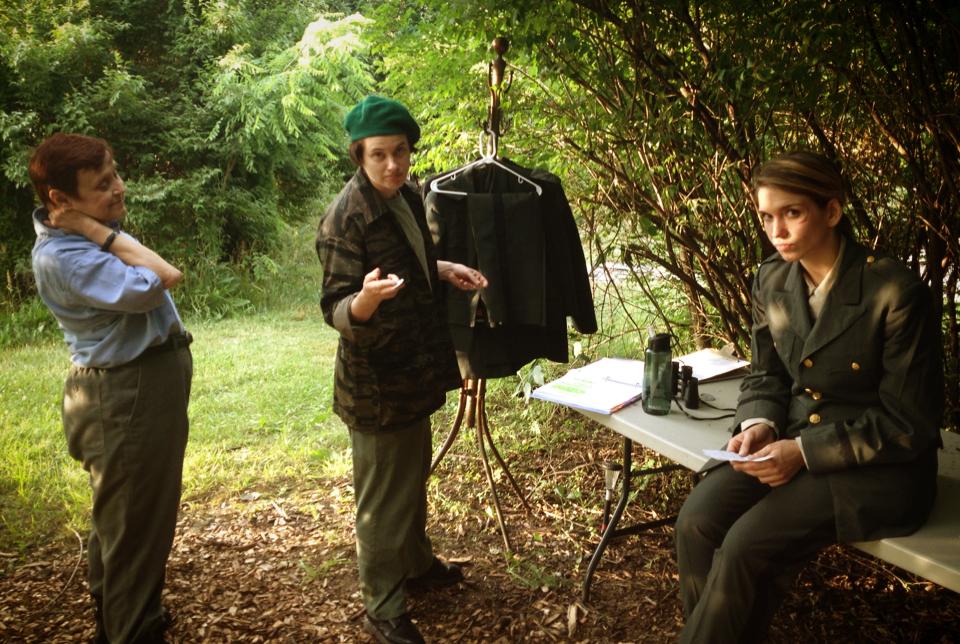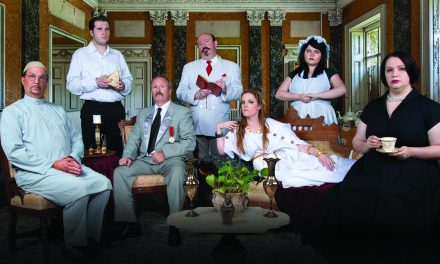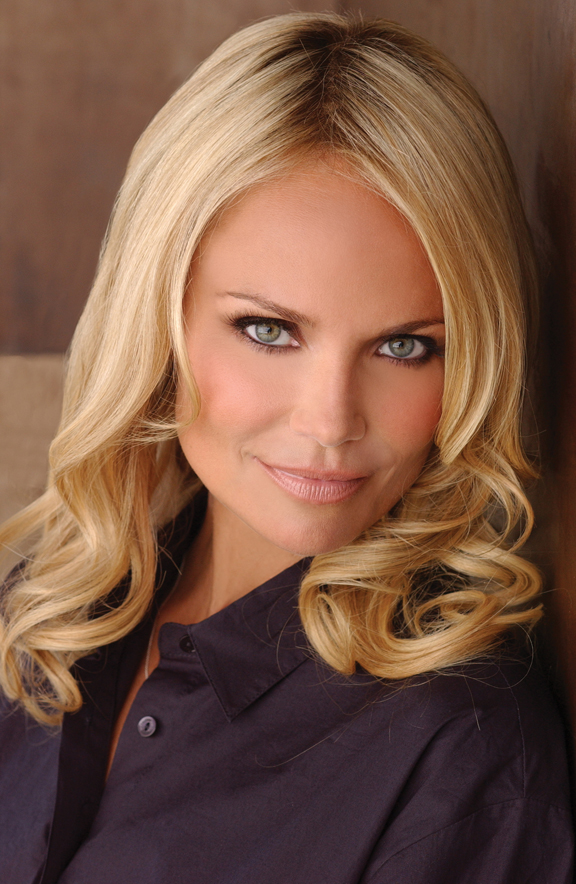Lynn McReynolds Chenault, Megan Adair, & Hallie Dizdarevic “backstage” at Henry V.
Photo: Mandi Elkins Hutchins
Henry V
By William Shakespeare
Directed by Kathi E. B. Ellis
Review by Keith Waits
Entire contents copyright © 2015 by Keith Waits. All rights reserved
Henry V has always been one of the most popular of Shakespeare’s history plays. Laurence Olivier made his debut as a film director and played the title role in a 1944 film that held enormous appeal for a war-ravaged Great Britain, and Kenneth Branagh rose to prominence in the 1980’s playing Henry at the National Theatre and then in his own, much-lauded film version. Needless to say, the part has often been a showcase for actors.
But it is also a story about beating the drums of war in the name of patriotism, rallying a nation to sacrifice, and victorious peace after “bloody constraint,” none of which would seem to suggest that distaff casting would make much sense. If war is the result of a deeply patriarchal power structure — an arguable premise, perhaps, but widely held — then what are we to make of women playing the parts of political-military leaders led by their testosterone?
Director Kathi E. B. Ellis sets her production during the Vietnam War, although the lack of specific detail from that conflict in costumes and props makes it seem more like simply a transposition to modern-day military, which may actually work better. The transition from French Colonial Indochina to U.S. imperialism in conflict with Communism can be seen to resonate with Henry’s English invading France, but the hayseed stereotypes used for some of the lower-class soldiers who allow for comic relief feels a bit uneasy and overdone in their first scenes. As the action progresses, these characters — Pistil, Nym, Bardolph, etc. — become more involved in the plot, they integrate well enough, and the players’ work becomes more grounded in the truth of the story.
One of the questions that always arise with gender-blind casting is whether, in this case, the female actors are trying to play men or simply the character. Clearly there was a certain amount of masculine posturing in physical movement and vocal timbre; the erect bearing fits the uniform, but the deeper voices are a more subjective choice that threatens to rob some of the characters, most particularly Henry, of some of the nuance. Henry is a young king who has only recently, and somewhat unexpectedly, grown into his position out of necessity, and Shakespeare provides plenty of opportunity in the words to explore his uncertainty. One reading of the text might allow that he has been talked into a foolhardy expedition by advisors following their own agendas, a lead he follows in order to measure up to his father’s legacy. Henry V is almost always presented heroically, but the epilogue reminds us that his son went on to lose the land gained here in yet another war (why has no one mounted a Henry V based on Bush 41 and 43?).
Hallie Dizdarevic gives her Henry great authority, with clear and forceful intent in her language. She commands without question, yet I could not help but wish for a little more vulnerability in the walk through camp the night before battle, and in the wooing scene with the French princess. Ms. Dizdarevic is a fine actor capable of exactly the subtlety required, and I longed for her to explore those scenes in greater depth.
She was well supported by Meg Caudill as Exeter, and a host of others playing multiple roles: Megan Adair was a fine French King but a most wonderful Fluellen; quicksilver in her dynamic, she steals every scene she enters. Mandi Hutchins moved through several roles but was most memorable as Michael Williams, the soldier who unknowingly exchanges challenge with Henry in that famous walk in the camp. Erica McClure did not let the virtuosity of playing Pistil and the Princess pass by unnoticed; rustic and ready to rumble as the former, delicately feminine but not without steel as the latter. Chelsea Skalski was an excellent Dauphin and Gower, and young Natalie Dufour did yeoman work as various servants and soldiers. Megan Burnett was a Chorus depicted as a correspondent roaming the fringes of the action with tape recorder and microphone and was an important element in reaffirming the setting.
It is tradition at Josephine SummerStage that a sculpture be employed as part of the set design. The stage is a shallow bowl in the landscape with a cement pad, and this year’s contribution, Jabberwocky, from Minnesota installation artist Alison Hiltner, is perhaps the first in the series that seems less a sculpture and more a set design; which is not to be derisive towards either dynamic, but the layered “puddles” of cement slinking across the ground and onto the concrete pad integrate into the landscape more than in the past, and the burnt grass that surrounds them is so suggestive of the aftermath of napalm and the resulting scorched earth that it becomes the most powerful evocation of the Vietnam setting.
The blocking suffered a few stiff and stilited moments, such as the Archbishop’s long argument for war, but intriguing use of modern interpretative movements to suggest battle were a nice touch reflective of the matriarchal creative energy at work in this production.
Henry V
June 11-13, 18-20, 2015 @7:00 PM
Josephine Summer Stage
3355 Lawrenceburg Road
Frankfort, KY
502-352-7082
josephinesculpturepark.org
 [box_light]Keith Waits is a native of Louisville who works at Louisville Visual Art during the days, including being one of the hosts of PUBLIC on ARTxFM, but spends most of his evenings indulging his taste for theatre, music and visual arts. His work has appeared in Pure Uncut Candy, TheatreLouisville, and Louisville Mojo. He is now Managing Editor for Arts-Louisville.com.[/box_light]
[box_light]Keith Waits is a native of Louisville who works at Louisville Visual Art during the days, including being one of the hosts of PUBLIC on ARTxFM, but spends most of his evenings indulging his taste for theatre, music and visual arts. His work has appeared in Pure Uncut Candy, TheatreLouisville, and Louisville Mojo. He is now Managing Editor for Arts-Louisville.com.[/box_light]





